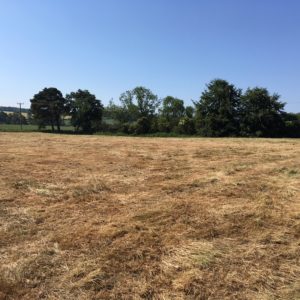Managing Grassland After A Drought
11 July 2018 During the drought some fields have been grazed and others shut off in the hope of a possible second cut etc. Where grass has been grazed, either by set stocking or rotational grazing, the lack of moisture has forced it to continually draw on it’s root reserves and deplete them.
During the drought some fields have been grazed and others shut off in the hope of a possible second cut etc. Where grass has been grazed, either by set stocking or rotational grazing, the lack of moisture has forced it to continually draw on it’s root reserves and deplete them.
For fields which have been shut up, where the drought has been severe the grass has gone very much into survival mode and, after having produced a couple of small leaves, gone to seed.
Action Plan
Grazing Fields
- As soon as rain is forecasted fertiliser all fields with around 40 kg N/ha. After the first flush of growth produced from first significant rainfall, be prepared to apply 40 kg N/ha.
- Plan to repeat this every 3 weeks to maximise grass production.
- If growth is sufficient to shut off some fields for potential second cut, apply an additional 40 kg N/ha as soon as the stock are removed.
- If possible try rotating grazing fields to allow grass time to recover, particularly its root reserves in between grazings. This can be achieved on a field basis by grouping stock which are currently in separate fields eg putting ewes and lambs amongst cattle, bulling groups together now mating has ended etc. Simply putting 3 fields of stock into one and rotating them on say a weekly basis will give grass 2 weeks in which to replenish root reserves and improve production.
Aftermaths
- Walk aftermaths now and see what proportion of the sward has headed.
- If many heads are fully open graze- them ASAP for a couple of days to utilise what is there and switch the plants back to vegetative growth.
David Lawson, david.lawson@sruc.ac.uk
Sign up to the FAS newsletter
Receive updates on news, events and publications from Scotland’s Farm Advisory Service
